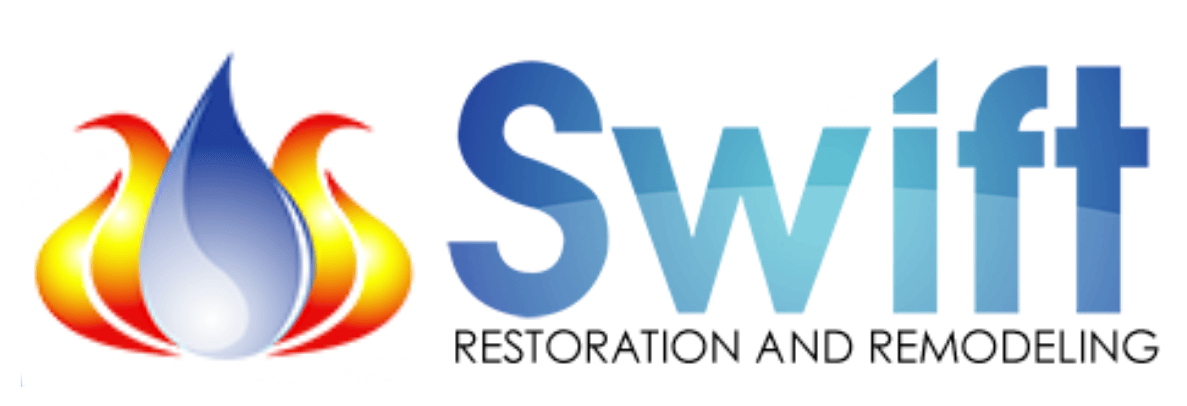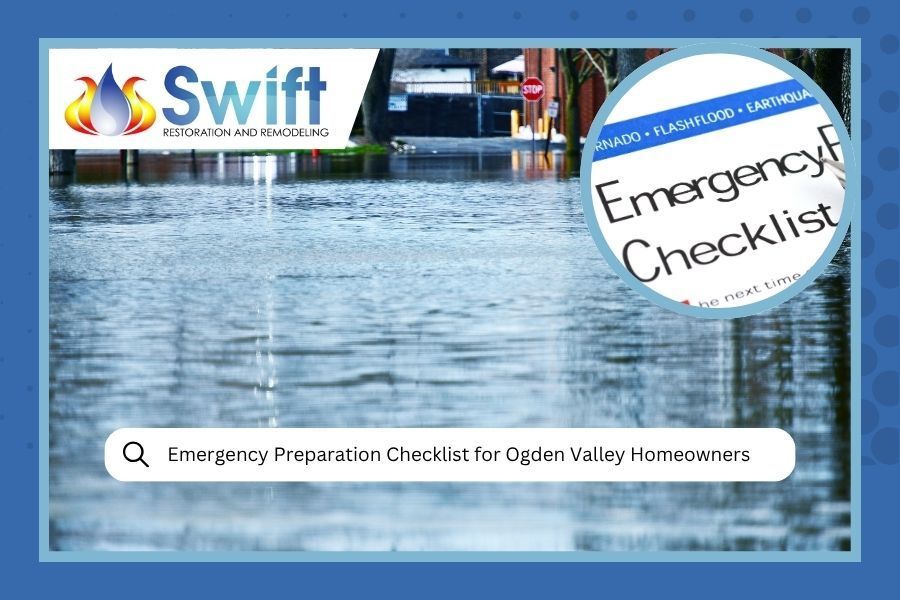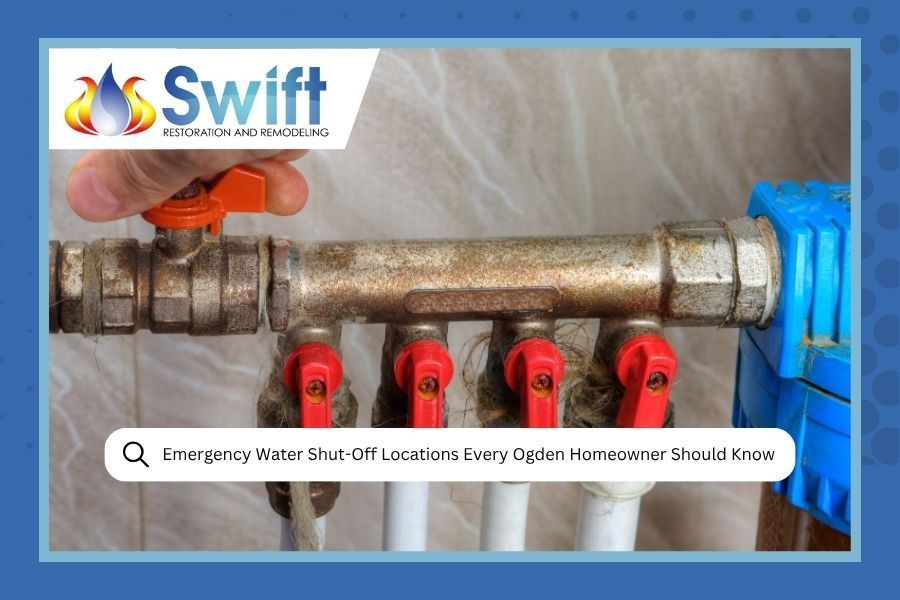
Author: Darin Jenks
Spotting the early signs of water damage to your foundation is crucial for preserving the structural integrity of your home. A compromised foundation can lead to significant costs associated with repair and water damage restoration Ogden, UT. By understanding these signs, you can take timely action to mitigate the damage and prevent further issues.
Key Takeaways
- Early detection of foundation water damage reduces repair costs
- Understanding signs of water damage helps maintain your home's structural integrity
- Ogden, UT-based Swift Restoration and Remodeling offers comprehensive support
- Call (385) 402-8204 for professional assistance in addressing water damage
- Preserving your home's foundation is crucial to ensuring a safe living environment
Understanding Foundation Water Damage Indicators
Understanding the key indicators of foundation water damage is paramount for maintaining a safe home and preventing costly repairs down the road. This section will provide you with an in-depth understanding of foundation water damage signs and educate you on how to recognize them. Understanding these signs can also be instrumental when talking to professionals about the specifics of the water damage affecting your foundation.
There are several common signs of foundation water damage that you should look out for:
- Cracks and fractures in the foundation
- Water stains and efflorescence
- Mold and mildew presence
- Bowing and bulging walls
- Persistent dampness and musty odors
- Pooling water around the foundation
- Signs of water damage in flooring
- Unexpected sinking or settlement
Monitoring your home for these telltale signs can help you stay proactive in identifying water damage to the foundation and taking appropriate action to mitigate further issues. Promptly addressing these issues can save you a significant amount of time and money in the long run, as well as preserve the structural integrity of your home.
It is important to note that early signs of water damage to the foundation might not always be apparent or easy to detect. Conducting routine visual inspections of your home's interior and exterior can help uncover subtle indicators that water damage might be present. It's crucial to address these early signs as soon as possible, as they can quickly escalate into more severe damage if left untreated.
Cracks and Fractures in Your Foundation
Water damage often manifests itself in the form of cracks and fractures in your home's foundation. Understanding the types of foundation cracks and recognizing the dangerous ones can help you take intervention to safeguard the structural integrity of your house. Let's dive into different types of cracks and how to identify those that require immediate attention.
Types of Foundation Cracks
Foundation cracks can be categorized into several types, each with its own cause and level of concern. Here are a few common types of foundation cracks:
- Vertical cracks: These cracks typically result from the settling of the soil underneath the foundation and can be a sign of water damage in the foundation. Although they might not be a major concern, it's crucial to monitor their growth.
- Horizontal cracks: These are a severe type of foundation water damage signs, caused by soil pressure against the foundation walls or water in the foundation of the house. Horizontal cracks need immediate professional attention as they can compromise the structural integrity of your home.
- Diagonal cracks: These cracks, which often appear as diagonal lines across the walls, are typically a result of differential settling and may point towards issues with the drainage system or excessive soil pressure on the foundation walls.
Recognizing Dangerous Cracks
Quickly spotting and identifying dangerous cracks can save you time and resources in the long run. Here are some notable indicators of severe foundation cracks:
- The width of the crack is more significant than 1/8 of an inch.
- Cracks with uneven surfaces or jagged edges.
- Horizontal cracks that run along the foundation walls.
- Cracks accompanied by bulging or bowing walls.
- Repeated instances of cracks reappearing even after repair.
If you observe any of these alarming signs, it's important to seek professional water damage assessment and provide appropriate solutions for restoring your home's safety and stability.
Water Stains and Efflorescence
Water stains and efflorescence are two common
signs of foundation water damage that can significantly impact the stability and safety of your home. By understanding how to recognize water damage to your foundation, you can take the necessary precautions to preserve your home's structural integrity and prevent further deterioration.
Water stains typically appear as discolored patches on your walls, floors, or ceilings. They can be particularly concerning when found near the foundation, as they suggest that water is seeping through the structure. Efflorescence, on the other hand, is a white, powdery crystalline deposit of salts that develops on the surface of concrete, brick, or other building materials as water evaporates. It's an indication that water has infiltrated the foundation, causing salt deposits to build up and potentially weaken the structure over time.
To help you recognize these signs early on, consider the following steps:
- Conduct regular inspections of your foundation and basement, checking for any signs of water stains or efflorescence.
- Monitor any existing stains or efflorescence, noting any changes in size, shape, or color that may indicate worsening water damage.
- Investigate any musty odors or dampness in the basement or crawl space, as these may also be signs of water infiltration.
If you spot water stains or efflorescence in your home, it is crucial to take them seriously and act promptly. The presence of these signs could mean that your foundation is suffering from water damage, leaving it vulnerable to further deterioration and potentially costly repairs. The sooner you address these issues, the better your chances are of preventing more extensive damage.
Mold and Mildew Presence
The presence of mold and mildew in your foundation is not only an eyesore but also a serious health hazard, as outlined by the FEMA guidelines. Familiarizing yourself with different types of mold commonly found in foundations and their potential health risks is crucial for maintaining a healthy living environment.
Common Types of Mold in Foundations
Here are some types of mold you might encounter in your home's foundation:
- Aspergillus - This mold is commonly found on damp surfaces like water-damaged walls, resulting in foundation water damage indicators.
- Cladosporium - This mold grows in both warm and cool environments and can appear on wood, concrete, and other materials used in foundations.
- Penicillium - Thriving in damp conditions, this type of mold is often found in basements and crawl spaces, causing musty odors and visible signs of damage.
- Stachybotrys chartarum - Also known as "black mold," this toxic mold thrives in areas with prolonged moisture exposure and can cause severe health issues if left untreated.
Health Risks Associated with Mold
Exposure to mold and mildew can lead to various health problems, ranging from mild allergic reactions to more severe respiratory problems. Below are some common health risks associated with mold exposure:
- Allergic reactions: Sneezing, runny or stuffy nose, itchy throat, and watery or itchy eyes.
- Asthma: Mold can trigger asthma attacks in sensitive individuals or worsen pre-existing asthma.
- Respiratory infections: Prolonged exposure to mold can increase the risk of developing respiratory infections, especially in people with weakened immune systems.
- Neurological symptoms: In extreme cases, toxic molds like Stachybotrys chartarum can cause neurological symptoms, including headaches, dizziness, memory loss, and others.
Bowing and Bulging Walls
One of the signs of water damage to a foundation that is often overlooked is the occurrence of bowing and bulging walls. This can indicate that water pressure is affecting your foundation and threatening the stability of your home. If left unaddressed, this issue can contribute to more extensive and costly damage.
Bowing walls are characterized by a curved or bent appearance, while bulging walls appear to be pushed outward. Both of these conditions can result from hydrostatic pressure, which is the force exerted by water on the foundation. This force can be caused by a high water table, poor drainage, or other factors that put your foundation under additional stress.
Knowing the foundation water damage signs is critical for taking appropriate and timely action. Recognizing bowing and bulging walls early on can prevent further structural compromise and save you from costly repairs.
To address bowing and bulging walls, consulting with professionals like Swift Restoration and Remodeling is necessary. They can recommend proper remediation techniques and help you implement effective solutions that mitigate future damage. Ensuring proper home maintenance, such as maintaining gutters and downspouts, as well as implementing drainage solutions, can also help in preventing foundation water damage.
Persistent Dampness and Musty Odors
Persistent dampness and musty odors in your basement or crawl space can often be overlooked as minor problems. However, these issues could potentially indicate foundation water damage symptoms on your property. Understanding these signs and their implications is crucial for maintaining your home's structural integrity and air quality.
When you notice dampness and musty odors, it is essential to inspect your basement or crawl space for visible water damage such as stains, efflorescence, and signs of mold. Approaching a water damage restoration Ogden UT professional like Swift Restoration and Remodeling can help address these problems more effectively.
A good way to diagnose the root cause of dampness and odors is to check for any structural or drainage problems around the house. Factors such as inadequate grading, poor soil drainage, or malfunctioning gutters and downspouts can be the primary sources of your symptoms.
It is vital to address these problems as soon as possible, as prolonged dampness can lead to various issues, including:
- Compromised structural integrity of the foundation
- Decreased insulation effectiveness
- Promoting the growth of mold and mildew
- Negative impact on indoor air quality and potential health risks
Here's a table detailing the potential causes of persistent dampness and musty odors, alongside their solutions:
| Potential Causes | Solutions |
|---|---|
| Inadequate grading around the foundation | Regrade the soil to slope away from the house |
| Poor soil drainage | Install a perimeter drain system or French drain |
| Malfunctioning gutters and downspouts | Clean, repair, or replace gutters and downspouts as needed |
| Plumbing leaks | Inspect and repair any leaking pipes or fixtures |
In conclusion, persistently damp and musty basement or crawl spaces should never be ignored, as they can be indicative of more significant foundational issues. For expert water damage restoration services in Ogden, UT, trust Swift Restoration and Remodeling to handle these issues and help you maintain a safe and healthy living environment.
Pooling Water Around the Foundation
Water accumulating around your foundation is a red flag for potential damage. This section provides insights into identifying problematic water accumulation and practical landscaping solutions that can help redirect water away from your home, ultimately protecting your foundation.
Identifying Problematic Water Accumulation
One of the most significant signs of water damage to foundation is the presence of pooling water around the exterior of your house. Water in the foundation of a house can lead to severe structural damage, so it's crucial to address this issue promptly. To identify problematic water accumulation, look for the following signs:
- Water consistently pools within 10 feet of your home's foundation after rain or snowmelt
- Water seepage through exterior walls and windows, indicating poor drainage
- Visible signs of erosion around your home, which can also contribute to foundation water damage
Landscaping Solutions to Redirect Water
Here are a few landscaping strategies that can help prevent water damage to your foundation, mitigate existing issues, and ensure proper water drainage away from your home:
- Grading: Adjust the slope of your yard so that it declines away from your home, preventing water from pooling near your foundation.
- Gutters and downspouts: Ensure your gutter system is clean, free of debris, and properly directing water away from your home through downspouts. Install downspout extensions as needed to channel the water further away from your home's foundation.
- Drainage systems: If grading and gutter improvements aren't sufficient, consider installing a French drain or another drainage system to help redirect water away from your home.
- Landscaping barriers: Establish barriers to prevent water from flowing towards your foundation, such as raised garden beds or retaining walls.
Protecting your foundation from water damage is essential for maintaining the structural integrity and value of your home. By identifying signs of water accumulation around your foundation and implementing suitable landscaping solutions, you can avert potential damage and costly repairs.
Signs of Water Damage to Foundation in Flooring
While most people concentrate on the external structural symptoms of foundation water damage, it's crucial not to overlook damage to your home's flooring. Various signs of water damage in flooring can point to potential foundation water damage issues. In this section, we'll delve into common foundation water damage symptoms visible in your flooring, such as warped floors, separation, tiling cracks, and gaps.
Warped Floors and Separation
One telltale sign of foundation water damage in your home is warped floors. Wood flooring is particularly susceptible to warping when it absorbs excess moisture. Additionally, separation between floorboards or the lifting of laminate and vinyl flooring can result from water damage to your foundation. If you notice any of these signs in your flooring, it is important to seek professional help to investigate the underlying issues.
Tiling Cracks and Gaps
Tiling cracks can also be indicative of foundation water damage. The presence of water in the foundation may result in uneven settling, causing cracks and gaps in tiled flooring. It is essential to pay close attention to these fissures, as they might reveal underlying foundation problems. If left untreated, the damage can worsen over time, potentially compromising your home's structural integrity.
Understanding the different signs of foundation water damage is crucial for early detection and remediation. By paying attention to your flooring and other areas of your home, you can help protect your investment and maintain a safe, stable living environment. Keep the previously mentioned symptoms in mind and seek professional assistance if you suspect any foundation water damage issues.
Unexpected Sinking or Settlement
One of the early signs of hidden water damage to foundation is the unexpected sinking or settlement of your home's foundation. Sinking or settlement occurs when the ground underneath your foundation becomes compromised due to excess water, resulting in the downward movement of your home's structure. Understanding how to identify water damage to foundation in its early stages can be crucial in preventing severe consequences for your home's structural integrity.
Water can infiltrate the soil beneath your foundation, causing it to shift or lose its bearing capacity. A few common signs of sinking or settlement can include:
- Cracks in walls or ceilings
- Uneven floors
- Gaps between walls and floors or ceilings
- Door and window frames that are out of alignment or difficult to open and close
To determine if your foundation is experiencing sinking or settlement, it's essential to look out for these signs and take immediate action once they are noticed. Ignoring these issues can lead to more significant problems like structural failure, costly repair bills, and even unsafe living conditions.
Steps to mitigate and prevent further sinking or settlement:
- Hire a professional foundation company to inspect your property and provide expert advice for remediation.
- Repair existing foundation cracks and implement waterproofing methods to prevent future water damage.
- Implement proper drainage systems, such as gutters, downspouts, and sub-soil drains, to direct water away from the foundation.
- Maintain the soil around your foundation by grading the landscape away from your home and avoiding excessive watering.
Foundation issues can be daunting for homeowners, but it's essential to address them as soon as they are identified. By understanding the early signs, regularly inspecting your property, and taking prompt action, you can mitigate the consequences of water damage and safeguard your home's structural integrity.
Foundation Water Damage Symptoms in Drywall
Drywall can often display signs of water damage, which might point to underlying foundation problems. In this section, we'll discuss the importance of recognizing these symptoms on paint, wallpaper, and drywall to identify potential foundation water damage.
Spotting Water Damage on Paint and Wallpaper
When inspecting your home for potential foundation water damage, it's crucial to pay attention to both paint and wallpaper. Signs of water damage on these surfaces can include:
- Peeling paint: Water damage can cause paint to bubble, crack or peel away from walls.
- Discoloration: Dark stains or rings on paint or wallpaper can indicate moisture infiltration.
- Blistering: Bubbles in paint or wallpaper, as well as areas that have become raised or swollen, can signify water damage.
If any of these symptoms are present, you should further investigate for possible foundation water damage.
Drywall Discoloration and Texture Changes
Apart from paint and wallpaper, the drywall itself can show signs of moisture-induced problems. These changes can include:
| Change | Description | Relation to Foundation Water Damage |
|---|---|---|
| Discoloration | Dark stains, spots or patches on the drywall | Can be caused by moisture accumulation or leaks in the foundation |
| Texture changes | Surface distortions, such as bulging, sagging or indentations | Potentially indicate water damage or structural issues in the foundation |
| Mold and mildew | Visible mold growth or mildew patches on the drywall | Often a result of prolonged moisture exposure, suggesting possible foundation water damage |
Knowing how to recognize water damage to the foundation through these drywall indicators will help you address potential foundation issues early, reducing repair costs and preserving your home's structural integrity.
Doors and Windows That Stick or Won't Close Properly
Although easily dismissed as negligible issues, doors and windows that stick or refuse to close properly can serve as foundation water damage indicators. These seemingly minor problems should not be taken lightly, as they could signify more substantial issues with your home's foundation due to water damage. It's crucial to understand and recognize these warning signs to address underlying issues before they escalate.
Doors and windows that stick or refuse to close properly can serve as foundation water damage indicators.
When water seeps into the ground and begins to affect your home's foundation, it can result in the shifting or settlement of the structure. This movement may cause door and window frames to twist or warp, which in turn makes them harder to open/close or unable to close correctly. If you notice persistent difficulties operating doors and windows in your home that are not related to hardware issues, it could be a sign of water damage to your foundation.
Take note of these signs and consider seeking professional advice to determine if your foundation has suffered water damage. Experts can assess your property, determine the extent of the damage, and recommend necessary repairs. Remember, addressing foundation problems early on can help prevent more significant, costly issues down the line.
External Warning Signs of Foundation Water Damage
Regularly inspecting the exterior of your home is necessary to identify water damage signs, including moisture intrusion and landscape changes. In this section, we will guide you through conducting these inspections and explain the importance of seeking professional assistance from experts, such as Swift Restoration and Remodeling located in Ogden, UT, to mitigate potential foundation damage.
Inspecting the Exterior for Moisture Issues
Stay vigilant when inspecting your home's exterior by looking for signs of moisture intrusion, such as discolored bricks, crumbling stones, or peeling paint. Also, check your gutters and downspouts to ensure they are clear and functioning correctly, as blocked gutters can lead to water overflow, causing damage to your foundation. Additionally, check for any signs of standing water near the foundation, as this could lead to seepage through your home's foundation walls.
Landscape Changes and Their Impact on Foundation
Landscape changes can also have a significant impact on your foundation. Over time, soil erosion and poor drainage can alter your home's surroundings, which can contribute to foundation water damage. Some solutions to consider include:
- Properly grading the soil around the foundation to ensure that water flows away from your home,
- Installing French drains or other drainage systems to help manage water accumulation,
- Planting vegetation strategically to absorb water and maintain soil stability.
Being proactive in inspecting your home's exterior, addressing moisture issues, and implementing landscape changes will help you maintain your home's structural integrity. If you live in the Ogden, UT area and need water damage restoration services, trust in the professional assistance of Swift Restoration and Remodeling to handle your water damage concerns effectively.
Conclusion
In conclusion, being vigilant in identifying the signs of water damage to foundation early on is crucial in preserving your home's structural integrity. From recognizing cracks and fractures to addressing issues like mold, mildew, and persistent dampness, it is essential to be proactive in dealing with foundation water damage. This not only helps maintain a safe living environment but also potentially saves you from costly repairs in the future.
Concerned homeowners can rely on Swift Restoration and Remodeling in Ogden, UT to provide the expert services you need to effectively mitigate and repair water damage in your home. With the right knowledge and professional assistance, you can have peace of mind and maintain the structural stability of your property.
So, take the time to inspect your home for the warning signs of foundation water damage, and remember that swift action is key when it comes to dealing with these issues. If you're in Ogden, UT and facing water damage, do not hesitate to reach out to Swift Restoration and Remodeling at (385) 402-8204 for expert services or fill out their
online contact form on their website.









